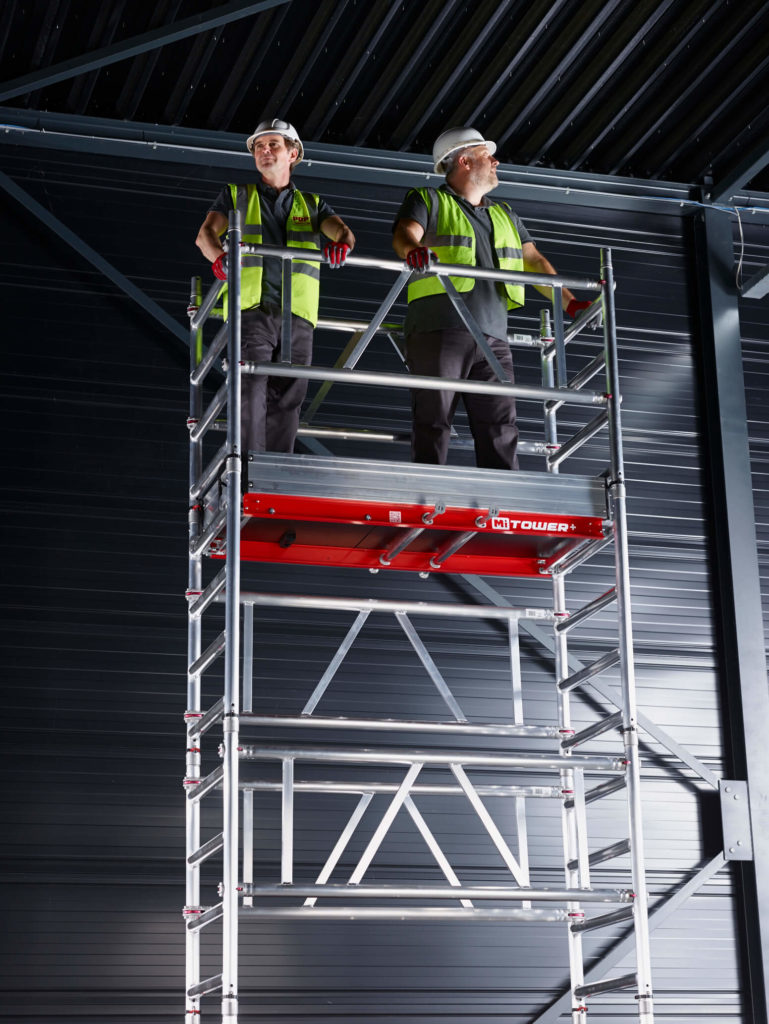- News & Articles
-
Products
Product Ranges
Product Categories
- Hire
- Buy
- About
- Resources
- After Sales Service
- Make an Enquiry
Whilst they might appear to be fairly simple on the surface, access towers are much more complicated than you might think. Most people would be forgiven for thinking that an access tower is a simple structure, but there are so many different components used to create one. Most of these will have been included as a safety measure. In this post, we’re going to explore all of the different access tower components in detail to give you a better insight into how your tower works.
Braces and guardrail frames are two of the most common, crucial components of an access tower, particularly when it comes to safety.
They’re exactly what they sound like in terms of the fact that they’re railings that are usually built into your access tower that are used to prevent users from falling from the tower when working at height.
Regardless of the height of your tower, guardrails should be fitted if you identify that there is the danger of a fall likely to cause injury to a user present. Using guardrails or braces also means that you won’t have to worry about using any personal fall protection, as they will provide comprehensive fall protection.
Similarly to braces and guardrail frames, toeboards should be installed on an access tower primarily for safety reasons; though there is an element of convenience attached to installing toeboards too.
From a safety point of view, toeboards are installed for the protection of anyone that isn’t working on the tower itself. They’re designed as a buffer to prevent items from falling from the tower, which could cause personal injury to someone below. The fact that they prevent items from falling also means that users don’t have to worry about constantly holding onto all of their tools for fear of them falling.
There are two types of platform available for any access tower – hatch and standard.
Both types are fairly self explanatory access tower components – a standard platform is simply a flat surface for users to stand on whilst working at height and a hatch platform contains a trap-door. Many people will prefer to use a hatch platform for safety reasons.
By using a hatch platform, users are able to use the 3T (Through The Trap) method whilst building their tower. This means that they’re able to climb through and sit on the hatch in the platform whilst installing guardrails and any other safety components. Without this, they’d have to risk climbing outside the access tower to install any elements.
Pins are a fairly basic access tower component. They’re parts used to connect elements of your access tower together. Whilst these are a basic part, there are a few different types of commonly used pins:
Clamps, locks and couplers are another integral part of any access tower.
Clamps – Are used to attach certain components such as stabilisers to your tower
Locks & Couplers – Are used to connect pieces of your access tower together, you’ll usually find these used for joints on the structure
Stabilisers are something that we highly recommend are used in any access tower construction. Due to their applications, they tend to come as pairs and offer extra support through being propped against the side of the tower. These are usually attached to an access tower through the use of a scaffold clamp. You’ll find that some even come with wing nuts, meaning that there are no tools needed to fit them.
This particular component doesn’t really need too much of an explanation. Rather than simple steel poles, it’s possible to purchase adjustable legs for an access tower to give a larger range of heights.
Locking castors are only used for mobile access towers. As many mobile towers will be moved using some form of castors, it is necessary to have them lock into place when the tower is in use. Locking castors give you the ability to do this and tend to come as standard for any access tower.
We hope that you found this guide to access tower components useful. If you need to purchase or hire any new components for your existing access tower then please get in touch with us using our contact form.
